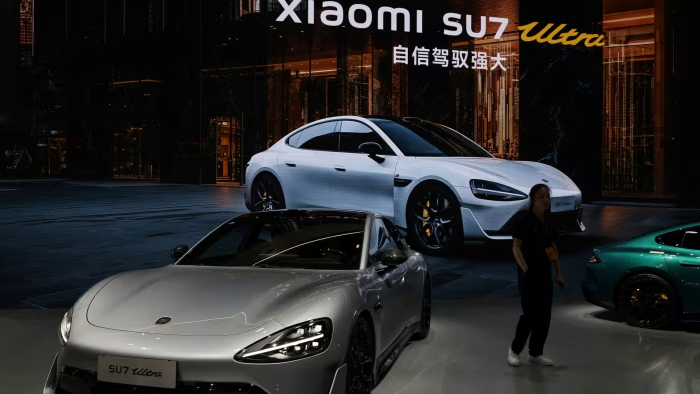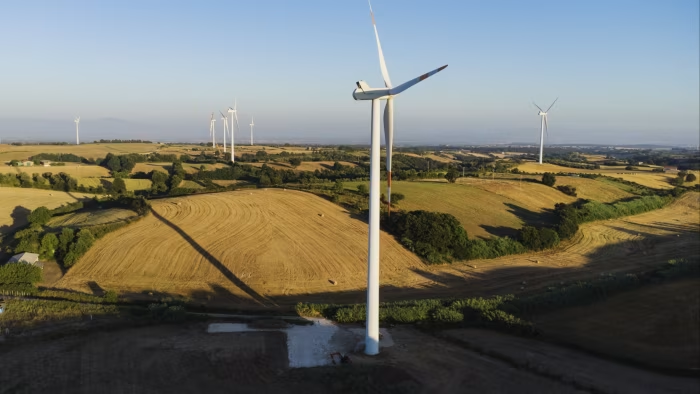- Huawei Mate 80 Pro to debut in these six new color options Huawei Central
- Huawei will launch Mate 80 series on October 22? Huawei Central
- Huawei Mate 80 Pro Design Leaks Via Back Covers Concept Phones
- Huawei has a slim phone to turn down iPhone…
Blog
-
Huawei Mate 80 Pro to debut in these six new color options – Huawei Central
-

Afghanistan pull out of tri-series involving Pakistan after killing of Afghan players in Paktika
Afghanistan has decided to withdraw from the upcoming tri-nation T20I series involving Pakistan, following the death of three Afghan cricketers in what it claimed was a “cowardly attack carried out by the Pakistani regime,” the country’s cricket…Continue Reading
-
China Rare-Earth Product Exports Shrink as US Frictions Flare – Bloomberg.com
- China Rare-Earth Product Exports Shrink as US Frictions Flare Bloomberg.com
- China tightens export controls on rare-earth metals: Why this matters Al Jazeera
- China has found Trump’s pain point – rare earths BBC
- China’s new restrictions on rare earth exports send a stark warning to the West Chatham House
- Rare earths tensions rise as US and China trade barbs Dawn
Continue Reading
-

After Gaza ceasefire, what’s next for Benjamin Netanyahu?
While the Middle East was on tenterhooks last week waiting to see if the latest ceasefire would hold in Gaza, US President Donald Trump revealed a conversation he had with Israeli Prime Minister Benjamin Netanyahu shortly after the deal was…
Continue Reading
-

Ethan Hawke shares hilarious style tip from late Robert Redford
Ethan Hawke recalls Robert Redford’s style advice Ethan Hawke fondly remembers a “really funny” piece of style advice from the late Robert Redford.
Hawke, 54, shared the piece of advice while speaking with AARP…
Continue Reading
-

Deadly floods in Mexico another sign of need for improved severe weather warnings
MEXICO CITY — MEXICO CITY (AP) — The most recent torrential rains in east-central Mexico, which have left at least 72 dead and dozens more missing, have raised questions again about the government’s ability to alert people to severe weather…
Continue Reading
-

it’s time to turbocharge your pension
Unlock the Editor’s Digest for free
Roula Khalaf, Editor of the FT, selects her favourite stories in this weekly newsletter.
The problem with a pensions crisis is that you might not know you’re in one until it’s too late to do anything meaningful about it.
Take Gen Z. The average 18 to 28-year-old hopes to retire at 60, according to new research from Standard Life. It’s an ambitious aspiration that’s well ahead of their state pension age of at least 68 (who knows what it will be by the time they come to retire — if it exists at all).
But there’s a bigger problem. Wealth manager Rathbones put out an alarming study recently saying that when they come to retire, Gen Z will need a pension of at least £3.1mn to afford a comfortable retirement. It arrived at that figure by taking the £1.4mn pot it thinks you need today and applying inflation to it for 65 years, spanning working life and 25 years of retirement, at 2 per cent a year.
Whether that figure works out to be accurate — I happen to be sceptical myself — or it’s £2mn, £1.8mn or less, younger workers can’t take it for granted that they’ll be able to afford a long, comfortable retirement.
Many “Zoomers” have portfolio careers, sometimes relying on gig work or holding down multiple part-time jobs — not ideal conditions to start building a nest egg. Add in high student debt and unaffordable housing, and it’s no surprise that Standard Life found this week that only 13 per cent are prioritising pension saving.
The big mistake is believing that minimum contributions via auto-enrolment to a workplace scheme will deliver. Standard Life found that 59 per cent of Gen Z think this.
If a 25-year-old earns £35,000 a year, the minimum level auto-enrolment saving level is £2,300 per year. Government figures show the average additional savings at this salary level amount to only an extra £560 per year — that’s never going to get you anywhere near £3.1mn. Assuming wage growth in line with inflation and a 5 per cent return on your pot every year, wealth manager Rathbones calculates that a 25-year-old needs to put away £1,600 a month.
That may seem like an unrealistic figure, but deferring until a time in the future when your pay is much higher is also not the most sensible tactic. If you want to turbocharge your pension, the time to act is now.
Take it from me, those early days are the most powerful force you can harness in your financial life due to the power of compounding. My pension from six years in my 20s — when I was a low earner — is now, in my 50s, worth easily more than the one in my 40s when I earned significantly more.
The first thing to do, if you’ve had frequent job changes, is consolidate any small deferred pension pots you may have accumulated from working in different jobs. I consolidated the ones from my 30s and 40s (alongside some little stray pots) but left that one from my 20s on its own as it had low fees. Moving them into a self-invested personal pension (Sipp) can stop you losing track and might even lower the cost. Independent website Money to the Masses says the cheapest Sipp is Vanguard’s up to £100,000 and then Interactive Investor for larger portfolios.
Then check what you’re invested in. If your workplace pension is in the default fund, equity exposure is likely to be low — perhaps as low as 50 per cent. Analysis of default funds by PensionBee found that average returns are below the 5 per cent level that many would consider to be “good”.
If you’ve got three decades until retirement, your capacity for risk is as high as it’s ever going to be, so you might want to consider being all in equities.
It’s also the time to put in as much extra money as you can. In your 20s or 30s, maximising your pension funding up to £60,000 a year or your earned income — whichever is the lower — only for a few years can have a massive impact. Wealth manager Tideway Wealth calculates that £180,000 added to your fund in your early 30s, which might cost only £100,000 after tax relief, could add £580,000 in today’s money to your fund by the time you hit your early 60s.
Another tactic — admittedly only open to the luckiest — is to ask for assistance. Wealthy parents and grandparents are increasingly providing a helping hand, financial advisers report, since they will have to pay inheritance tax on any unspent pension passed on from April 2027.
Gifts from spare income will immediately reduce an estate for IHT purposes. Plus, donors will see some money recouped via tax relief on pension contributions — satisfying for those peeved by paying extra income tax in an attempt to run down their pensions faster. Since the child or grandchild won’t be able to access the money until they are at least 57, it at least reduces the fear the money will be squandered on fast living.
“It’s a win-win from a tax perspective on both sides of the generational equation,” says Charlotte Ransom, chief executive of Netwealth, a wealth manager. “It can generate very meaningful, long-term value with efficient compounded returns and avoids the risk of the money being spent unwisely during younger years.”
James Baxter, founder of Tideway Wealth, says: “We have several early 30-year-olds who already have around £100,000 in both an Isa and a Sipp funded entirely by their parents. These were accumulated in their early careers when they were not earning that much and it would have been impossible to save much on their own.”
So, with just under 10 weeks to go until Christmas, Gen Z know what to say when they get asked what present they’d like under the tree: a slug of money in their pension.
Moira O’Neill is a freelance money and investment writer. Email: moira.o’neill@ft.com, X: @MoiraONeill, Instagram @MoiraOnMoney
Continue Reading
-

Why luxury EV sales are still in first gear
Unlock the Editor’s Digest for free
Roula Khalaf, Editor of the FT, selects her favourite stories in this weekly newsletter.
People who buy expensive cars do so because they are keen on roaring engines, buttery-soft interiors and iconic logos. What doesn’t play into their purchasing decisions, apparently, is how environmentally friendly the vehicles are.
Responding to customer preferences, Ferrari said last week that it only expects 20 per cent of its models to be fully electric by 2030, down from 40 per cent previously. Porsche last month delayed a new range of high-end EVs, with chief executive Oliver Blume — who may be on the off ramp at the sports-car maker — citing a drop in demand for exclusive battery-electric cars. Mercedes has also seen weak EV sales, although third-quarter numbers improved.
That’s somewhat of a contrast to the mood in the broader EV market, which — amid ups and downs — sold a record 2.1mn vehicles in September. There are lots of reasons why luxury EVs are failing to get traction. One is that China is the biggest market in the world, accounting for 65 per cent of overall EVs sold last year. And in China, the cars that do a roaring trade tend to be cheap little runarounds. On top of that, consumers who do want the convenience of the high-end electric car have homegrown models to choose from: buffs reckon the Xiaomi SU7 is not entirely dissimilar to the Porsche Taycan, at a fraction of the price.
Price is also a factor in Europe, where luxury and premium EVs carry a relatively high premium compared to the equivalent internal combustion engine (ICE) model. Plus, the rapid pace at which EV technology is developing means that resale values are relatively low.
In the near term, sluggish demand for luxury EVs is only really a problem for western manufacturers who raced down that road. Porsche, for instance, has had to write down some of its investment. For those who have been keeping their options open, the slower than expected decline of the old technology means they can carry on selling the more profitable ICE cars for longer.
Still, it potentially stores up problems later on. For one thing, electrification may shrink the pool of customers that are willing to pay top dollar for a car: electric engines are less differentiated than the traditional kind, so manufacturers will have to figure out how to justify the extra expense via design and gizmos. And, for another, Chinese manufacturers are rapidly moving up the value chain. When the market for luxury EVs does ignite, western carmakers may find that rivals have raced ahead.
camilla.palladino@ft.com
Continue Reading
-

Vestas shelves Polish turbine plant amid weak European demand
Unlock the Editor’s Digest for free
Roula Khalaf, Editor of the FT, selects her favourite stories in this weekly newsletter.
Europe’s leading wind turbine manufacturer, Vestas, has shelved plans to open its biggest factory in Poland, citing sluggish demand in its core European market.
Vestas announced last year that it would build the plant outside Szczecin, close to the Baltic Sea coast, to make blades used in powerful wind turbines.
However, the Danish group has now decided to suspend its investment in a facility that was initially expected to open in 2026 and employ more than 1,000 people.
The company told the Financial Times that the plans had been “paused due to lower than projected demand for offshore wind in Europe”.
It declined to say whether any of its other operations had been affected by the difficult market conditions in Europe, its key market.
The decision underlines the challenges faced by Europe’s offshore wind sector as it navigates higher costs, supply chain bottlenecks and political opposition in the US.
It is also a setback for Prime Minister Donald Tusk’s government and its efforts to cut Poland’s dependence on polluting coal by expanding in green energy and building domestic manufacturing for renewables.
The EU, UK and Norway have a combined offshore wind target of at least 129GW either operating or under construction by the end of the decade.
However, consultancy TGS 4C has said they are on track for only about 84GW, with Denmark and Germany both failing to find bidders for projects in separate auctions over the past 12 months.
Vestas ‘continues to invest in a local manufacturing footprint where offshore wind market volume and certainty allow’, it said © Jonathan Nackstrand/AFP/ Getty Images European governments are trying to offer attractive terms and support to developers to help the industry, given its strategic importance as a source of low-carbon and domestically generated power.
But, outside China, the sector has struggled to generate returns, while attracting the ire of US President Donald Trump, who has a personal animosity towards the technology.
Ørsted, the world’s largest wind developer, recently outlined plans to retreat from the US and refocus investment in Europe and parts of Asia.
Turbine makers such as Vestas are generally keen to be certain of demand before investing heavily.
Yet any retreat by European manufacturers from their core market could open the door for Chinese competitors to move in and take market share.
Vestas said it “continues to invest in a local manufacturing footprint where offshore wind market volume and certainty allow”.
Offshore wind is central to Poland’s green efforts, with several projects under way that seek to turn the waters off Poland’s north coast into one of Europe’s largest hubs for wind farms.
Warsaw also hoped these can spur the creation of a domestic manufacturing sector capable of supplying turbines to a range of European markets.
Vestas has already invested in Poland by building an assembly plant for the nacelles that hold a turbine’s critical components and by buying a facility that makes blades for onshore turbines.
The planned Szczecin factory, however, was to be its largest Polish project to date, located on land bought in 2023. It was intended to manufacture blades for Vestas’s flagship offshore turbines, each capable of generating 15MW.
Poland’s first offshore turbines are expected to begin operating next year as part of the €4.7bn Baltic Power joint venture between state-controlled Orlen and Canada’s Northland Power, using Vestas as a supplier.
Warsaw wants Baltic Power and other large-scale projects to deliver 18GW of offshore capacity by 2040, roughly half of Europe’s current total.
Continue Reading
-

Trump had to choose between Israel and Qatar. He chose Qatar – Financial Times
- Trump had to choose between Israel and Qatar. He chose Qatar Financial Times
- Witkoff says he and Kushner ‘felt a little bit betrayed’ by Israeli strike in Qatar The Times of Israel
- Terry Glavin: In a war of 1,000 defeats, the one clear winner…
Continue Reading